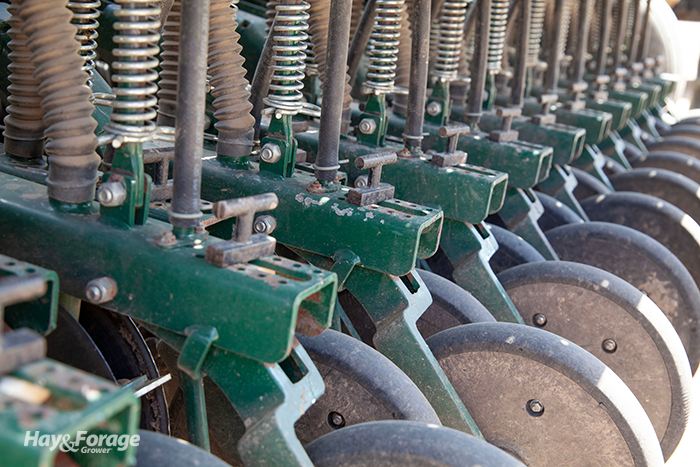
In a few days, we’ll be flipping the calendar to August. That will mark the beginning of the traditional late-summer alfalfa seeding window. But when does that window close?
Recently, I got a phone call asking if we shouldn’t be extending the recommendation for seeding alfalfa beyond historically accepted dates. For much of the Midwest, that “keep your seed in the bag” date is September 1, unless you’re in the extreme Northern areas. If crop insurance is a consideration, their final planting date to qualify for coverage is August 31 for most of the Midwest.
I’m not sure if any of these recommendations should change, at least not yet, but I am sure that our average growing season has been extended by a week to 10 days over the past couple of decades.
Due to climate change, final killing frost dates don’t occur as early as they once did. This means that making alfalfa seedings into early September isn’t as risky as it once was, especially if adequate soil moisture is available. Of course, if doing so, forage seeding insurance won’t be an option.
On the front side of the seeding window, the first week of August may now be riskier as well. Hot, dry conditions are more likely to thwart stand establishment. Knowing that stands will likely have more time to grow before a killing frost, it seems reasonable to wait until temperatures moderate, and moisture is imminent.
It seems that August 10 to 20 might be the “sweet spot” for late-summer alfalfa seedings in most years; however, there are going to be years when earlier seedings will be better and ones when later seedings will excel. What we do know for sure is that these seedings have more time to establish than they once did.
Late-summer advantages
Regardless of when you seed, it needs to be noted that late-summer alfalfa seedings offer many advantages over their spring seeding counterparts. These include:
1. Alfalfa seedling root diseases are often less of a problem under drier, warmer conditions.
2. Weeds and insects seldom limit stand establishment.
3. A companion crop is never recommended, and an herbicide application is often not needed. The only exceptions include using glyphosate in the case of Roundup Ready varieties or following a cereal grain where volunteer grass plants are sometimes a problem, especially if straw chaff was dropped in a windrow behind the combine.
4. The near equivalent of an established-stand yield is realized in the year following a late-summer seeding.
Recommended seeding practices for spring seedings apply to late-summer seedings from a soil fertility, seeding rate, and seedbed preparation standpoint. Also ensure that herbicide carryover from a previous crop won’t inhibit establishment. It is worth mentioning that a firm seedbed to optimize seed-to-soil contact is more critical with late-summer seedings. No-till seedings in late summer have also been successful and may help to conserve available soil moisture.

